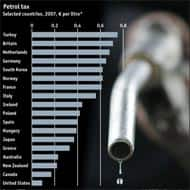
Riken Mehta
Travel firm Thomas Cook (India) reported a consolidated net profit of Rs 32.49 crore for the quarter ended June 30, 2013 compared to Rs 31.01 crore in the same period last fiscal.
The company's total income rose to Rs 306.34 crore, from Rs 137.13 crore for the year-ago period. The consolidated results for the quarter and half year ended June 30, 2013, include the consolidated results of HR solutions firm IKYA for the period May 14 to June 30, 2013, and consequently are not comparable with corresponding previous periods, the company said. Here is a moneycontrol exclusive interview with Mr. Madhavan Menon, managing director at Thomas Cook (India) on company's quarterly results.
1. What was the volume growth in the domestic and international holidays booking?
Anticipating price sensitivity, we had launched a range of products to cover every price point - from super budget, budget, value to premium- a strategy that we will continue to pursue. Further, our early bird discounts, and ‘Holiday pe Holiday, Free!’ offers created an impactful boost to spur demand. Against a challenging backdrop of spiraling airfares, a depreciating rupee and negative consumer sentiment in a sluggish economy, our outbound business at Thomas Cook India recorded strong growth with an increase of 15% over Q2 of the previous financial year. Our focus on domestic vertical has also delivered a sales growth of 10 percent over Q2 of 2012. Despite doom and gloom prophesies, the depreciating rupee has seen an interesting upswing with currencies like the Australian Dollar and stability against the New Zealand Dollar & South African Rand, and Thomas Cook India has leveraged this with significant savings and value add to consumers- Australia with New Zealand free, South Africa with Kenya free, upgrades to 5 star accommodations, child travels free, discount offers, etc. Our winter forwards for these destinations have already picked up strongly by 30 and 40 percent respectively.
2. The company also innovated by offering shorter and cheaper holidays. How was the response? With slowdown in the overall economy and discretionary spending will the company announce more sale and discount offers to attract more people? Has there been a drop in bookings of international holiday packages? If yes, what was the percentage drop?
Travel has now become a “must-do” in the Indian consumer’s calendar. While customers are weighing all options, our trend data indicates that even the most price sensitive travelers will continue to travel, albeit with a shift to short haul and value destinations like the Far East (Thailand, Singapore, Malaysia), Sri Lanka & Dubai. So our sense is that the movement of the rupee will impact merely his choice of destination not the decision to travel. Thomas Cook India introduced fresh new short hauls like Myanmar, Vietnam, Cambodia, Philippines and these works well in light of the depreciating rupee. These offers to rupee friendly destinations have also worked extremely well with growth of over 40% to South Africa and 30% to Australia-New Zealand. Wintervals holidays features impactful ‘saver’ options like stays at hostels and apartments; economical rail travel for a shorter duration via a newly launched 2 day Swiss Rail pass. Foray into new markets/segments (Regional Tier II & III) with specific Regional Tours; “Travel and Learn” for students and “Rock-On Holidays” targeting the upcoming GenY, was another strategic intent that panned out well for us, despite swings in the rupee. Our forward bookings overall for the upcoming season are up by about 20%. The depreciating rupee has also brought domestic travel to the fore, and is now a strategic focus for Thomas Cook India. Our new offers showcase engaging ‘value-adds’ like the under-sea walk and snorkeling at no extra cost and to further inspire demand, greats price savings. Our “Borderless” Multi currency Prepaid Forex Card, is seeing strong positive traction among corporate and retail customers alike, with 20% CMGR. We have doubled our customer base in the last 3 months alone.
3. Earlier there were reports of the company monetizing its land at Nariman Point. Can you give us more details on it?
Thomas Cook (India) Ltd, has as part of its strategic intent, consistently evaluated various business operating models, which include optimisation and consolidation of work places. Given our growth, as also our expansion plans, our current Nariman Point back office premises is limited, necessitating our search for alternative space. This also offers us opportunity to explore new potential in this domain, including significant new office space in key emerging micro markets- in proximity to our consumers.
4. Do you think the weakness in the rupee will give a boost to domestic tourism as against people holidaying abroad?
Our revenue is reported in Indian Rupees and not calculated in dollars. Indeed, the depreciating rupee has brought Domestic Tourism into the spotlight like never before, and Thomas Cook has ramped up its domestic portfolio to over 818 products this year to match demand. Our Inbound business too stands to benefit from rupee depreciation, with an improved value proposition of about 10% to the inbound consumer. Kashmir, Andamans, Kerala, Goa, and Rajasthan are been the flavour of the season with our domestic consumers.
5. How is the demand scenario? Are you experiencing a drop in foreign tourist arrivals? What was volume growth compared to the previous quarter?
At Thomas Cook India, the fall in rupee has made our Inbound product far more attractive and affordable for foreign tourists with an impactful value proposition upward of 10%, with more bang to the buck for extra shopping!
While traditionally considered a premium destination for foreign tourists, India has now seen renewed interest courtesy the depreciating rupee, and our Inbound Team has seen an increase of 7-10% in queries- Delhi, Agra, Rajasthan, Kerala continuing as favourites, and emergence of Punjab, the North East and Kashmir.
At Thomas Cook India, we are observing an interesting phenomenon- inbound travellers increasingly booking rather late; some even at the last minute. An emerging trend is a noticeable shift from traditional destinations towards exploring off beat locales like the North East, Kashmir, Gujarat, Punjab and Shimla. Source markets too are witnessing change- with Middle East, China, Russia, Indonesia now appearing on our radar. Customer target groups too are increasingly widening to include young, adventure travellers to the high-end luxury clientele. We are optimistic that the falling rupee will make India an attractive and affordable destination with an overall increase of upward of 5% tourist arrivals anticipated this winter.


